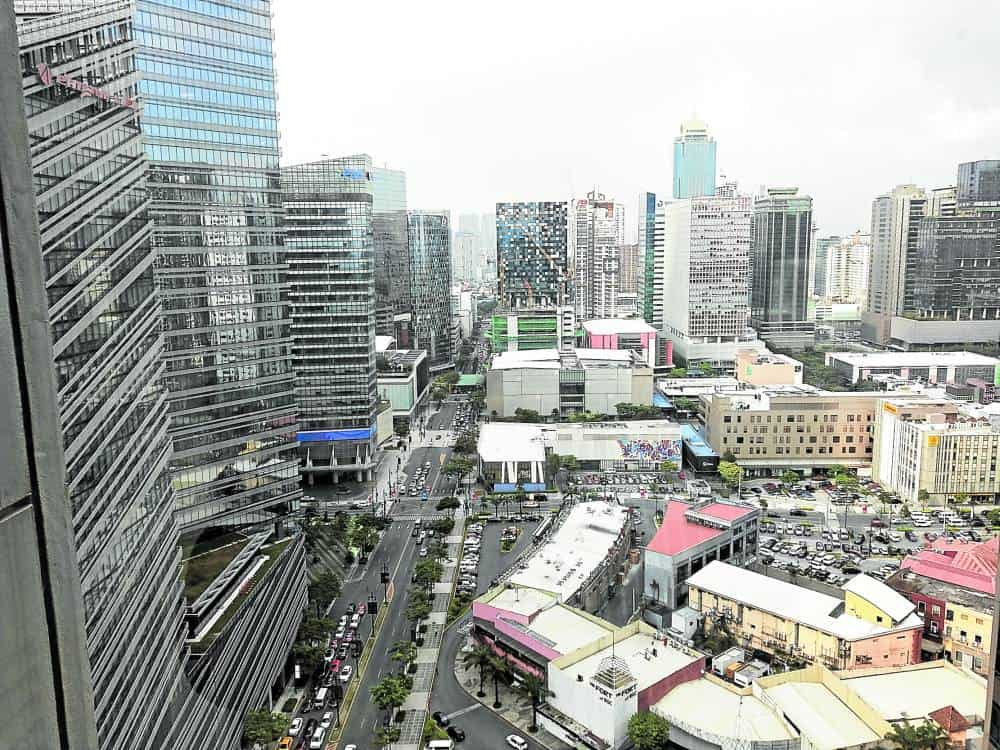
The Philippine office space industry is currently in a recovery phase which makes it a “tenant-market” in terms of rent prices. However, as the recession suffered by the industry is not market-driven but an external, artificial shock, the recovery is expected to be faster and the long-term occupancy average of 95 percent might be breached over the next 12 to 18 months.
Unique situation
The real estate industry is in a recession, not because of market forces that usually create the real estate cycle of recession, recovery, expansion and hyper-supply, but mainly due to the COVID-19 pandemic. This unique situation merits a deeper study from real estate practitioners to arrive at reasonable conclusions and strategies for the industry, specifically in the office space market.
Based on historical data for the past 20 years, we can look at two events to situate the current behavior of the real estate industry—the 2002 SARS Outbreak and the 2008 Global Financial Crisis (GFC). We can use our experience here to navigate the challenges brought about by the COVID-19 pandemic.
The SARS outbreak was a public health issue just like COVID-19, while the 2008 GFC had a negative impact on the global economy similar to how the pandemic is now affecting it.
The office market showed an average 8 to 10 percent decline in rental rates during the SARS outbreak and the 2008 GFC. However, in terms of rent recovery, the decline in 2003 due to the SARS outbreak was quickly recovered in 2004. The decline in 2009 due to the GCF meanwhile took three years to recover.
Total office supply in Metro Manila barely moved from 2001 to 2007, which resulted in prices going up for the period 2005 to 2007 during which demand outgrew supply. Hence, the decline in rental rates in 2009 might be due to two factors—the 2008 GFC and a market correction of the elevated rent prices as a result of under-supply or non-construction of new supply.
Vacancy rates
During the pandemic, Lobien Realty Group (LRG) has not observed significant decline in rental rates so far as it remained steady at P1,100 per sqm. However, the vacancy rates almost quadrupled—from 5 percent in 2019 to 19 percent as of the second quarter of 2022.
Hence, we believe that rental rates are expected to soften, as a result of the high vacancy rate, mostly coming from office spaces left vacant by the Philippine offshore gaming operators (Pogos), some business processing outsourcing (BPO) firms and other companies.

Landlords will seek to rent out available spaces to tenants who are starting to look for office spaces in light of the observed economic recovery that started in 2021; the easing of mobility restrictions; back-to-office mandate of the government for Peza-registered companies; the preference of Filipino companies for physical reporting of employees in the offices; and the over-all movement in the global economy.
Although this recovery is currently being negatively affected by the Russian-Ukraine conflict, the prevailing notion is that the economy will continue to recover despite the economic headwinds brought about by higher inflation.
Demand
Office demand will primarily come from the BPO industry. Around 450,000 sqm of office space will be needed to accommodate the hiring that happened during the pandemic (2020 to 2021) and the projected increase in BPO personnel postpandemic (2022 onwards).
Also, tenants will now require more space to pandemic-proof their offices and the possibility of increased provincial office demand and preference for township locations as part of their business continuity arrangements in case of lockdowns. Companies which previously shut down their operations and those that are now recovering will also start looking for office spaces. Finally, LRG has noted the presence of some online gaming companies which have slowly restarted their operations.
All these factors are expected to positively affect office demand—which can be observed in terms of office space leased, doubling from 8 percent in the second quarter of 2021 to 16 percent in the second quarter of 2022.
If you like this article, share it on social media by clicking any of the icons below.
Or in case you haven’t subscribed yet to our newsletter, please click SUBSCRIBE so you won’t miss the daily real estate news updates delivered right to your Inbox.
The article was originally published in Inquirer.NET and written by Sheila Lobien.







More Stories
Vista Land Celebrates 50 Years with Sandiwa: An Event Honoring Leadership, Legacy, and the Filipino Dream of Homeownership
Vista Land Celebrates Love Month in Ilocos Region
Vista Land Bridges Cebuano Heritage and Progress with Valencia by Vista Estates